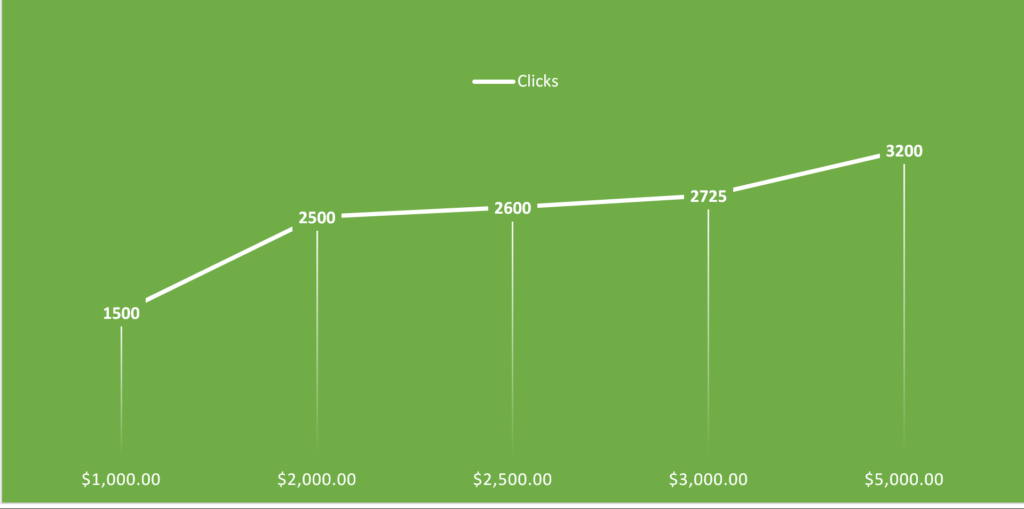Diminishing Returns in Performance Marketing
The law of diminishing returns is an economic principle stating that as an investment in a particular area increase, the rate of profit from that investment, after a certain point, cannot continue to increase if other variables remain at a constant.
Let’s take a real-life example, suppose if you are thirsty then as soon as you get water to drink, the first glass of water will give you the most satisfaction, and second glass of water will give you less satisfaction, and chances are that when you start to drink third glass of water then you will not finish it. This is the law of diminishing returns. It means that every additional unit of input generates fewer returns or benefits than the previous unit.
The law of diminishing returns in performance marketing
The law of diminishing returns can be applied to performance marketing as well. For example, if you keep pumping more money into your AdWords campaigns and your coverage stays the same, at some point your conversion rate will go down and cost per acquisition will go up.
So, doubling your budget doesn’t always mean doubling your sales. You have to increase your coverage by adding more keywords, exploring more channels. In this case, your variables are not constant and you can avoid the point of diminishing returns.
How to find the point of diminishing returns?
This should happen gradually, you experiment different budgets till you reach the point of diminishing returns where any additional cost returns less profit than the previous one.
Let’s say a client finds out after experimenting that with a daily budget of $1,000, they generate 1,500 clicks. If they doubled the budget to $2,000, the number of clicks to their website is 2,400. Notice this is less than double the previous number. And with $2500, they get 2600 clicks. With $3000, they generate 2725 clicks. And with $5000, they get 3,200 clicks.

What we know is that the higher the budget, the fewer additional clicks we get. What we also need to know to make a sound economic decision is the value of each click. Keep in mind that not every customer who clicks and lands on the website is actually purchasing. Let’s also say that the company knows that the average gross margin per click is $1. Therefore, the 1,500 clicks will generate $1,500 and 2,400 clicks will generate $2,400.
The question is now at which point is the difference between our gross margin and our advertising costs the highest? We can do a few calculations. If we invest $1,000, we get 1500 clicks, which turns into $1,500, so that our profit is $500. If we invest $2,000, we get 2,400 clicks, which equals to $2,400, resulting in a profit of $400.
This means investing $2,000 is more profitable than investing $1000. What happens if we invest $5,000? We receive 3,200 clicks, which equals $3,200, which is $1,800 less than our investment. In other words, with $5,000 budget we lose money because the law of diminishing return does not justify this budget increase. Above this budget, the law of diminishing return kicks in and leads to a gross margin per click that is lower than the cost per click.
Conclusion
Understand that doubling the budget doesn’t mean doubling the performance or sales, you need to do a lot more than just raising the budget. Try to bid on more keywords in your search engine marketing campaigns, run more ads and explore different channels. In this way, you will stay away from the point of diminishing returns.

Entrepreneur focused on building MarTech products that bridge the gap between marketing and technology. Check out my latest products Markifact, Marketing Auditor & GA4 Auditor – discover all my products here.

Amazing, incredible blog framework! How much time have you ever been writing a blog to get? you’ve made blogging and site-building look quick. The entire glimpse of your respective website is terrific, since smartly since the . cpm networkcontent!
Interesting blog post! Thanks for sharing 🙂
Thanks for the write-up! Though, I think I’m confused…
How is it that investing $2K is more profitable than investing $1K where the profit on $1K is $500 and the profit on $2K is $100 less @ $400?
I am likely missing something here and will appreciate the further insight!
Thank you 🙂
Your math is right but your conclusion is wrong. $400 is less than $500. Diminishing returns start at that $2,000 investment that only yields $400 profit instead of $500 at a $1,500 investment.
“If we invest $1,000, we get 1500 clicks, which turns into $1,500, so that our profit is $500. If we invest $2,000, we get 2,400 clicks, which equals to $2,400, resulting in a profit of $400. This means investing $2,000 is more profitable than investing $1000.
At what point can you begin to calculate your own rate of diminishing returns? After how many months of data? How much $$ spent? I’ve not found any “average rate” around the internet, and of course there are so many variables for every scenario, so it makes me think we need to determine our own diminishing rate against our own sales… Thoughts?
This maths is incorrect and the conclusion is incorrect